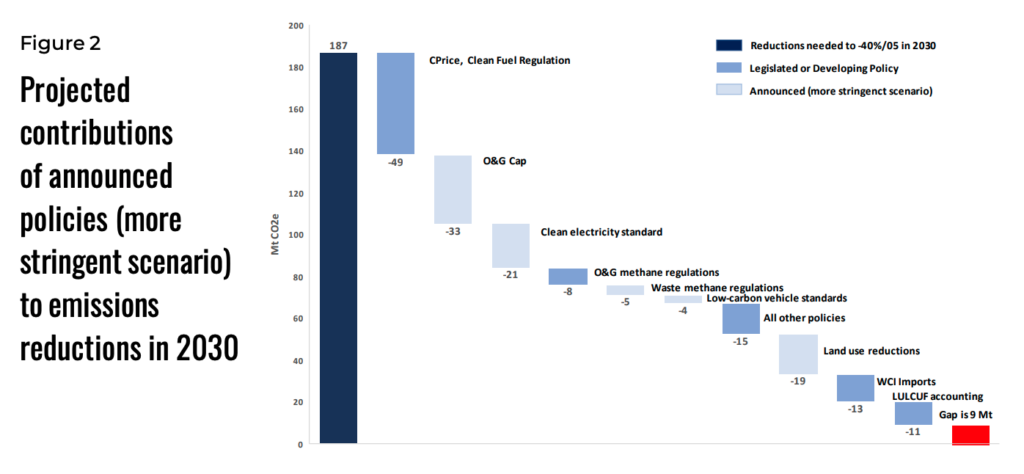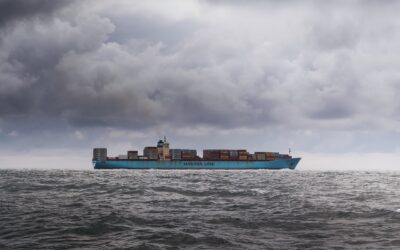This opinion piece originally appeared in Corporate Knights.
Canada’s new 2030 Emissions Reduction Plan (ERP) is a comprehensive, ambitious and transparent policy roadmap for achieving Canada’s climate goals. It uses credible modelling to demonstrate a path to 2030 targets. It’s a big step forward.
It’s also not enough.
Modelling is critical for planning, but it doesn’t reduce real-world emissions, nor does it attain targets. Ultimately, Canada’s success will depend on how – and how quickly – the government puts those policies in place.
Fortunately, the 2030 ERP is a decent roadmap. According to our independent analysis, the plan will drive emission reductions across all sectors and all major sources of emissions in the economy.
Unfortunately, Canada has less than nine years to design and implement most of the policies contained in the ERP. Based on our assessment, a full 100 megatonnes of emission reductions – 43% of the needed reductions – are projected to come from policies that have been announced but that still need to be developed and implemented. As Canadian climate policy wonks know all too well, the process of regulatory consultation and design takes time.
The federal government should use the ticking clock to focus its attention on what matters most: the policies that, if designed well, will deliver the lion’s share of reductions required. Here are the five policies that, according to our analysis and modelling, will deliver about two-thirds of the reductions needed to meet Canada’s 2030 emissions targets.
- Continued adjustments to the federal carbon price. The government needs to keep ratcheting up the stringency of its carbon-pricing system to deliver more reductions.
- Establish an emissions cap for the oil and gas sector. The plan will look to reduce the emissions of the sector to 42% below 2019 levels by 2030, taking into account policy interactions with carbon pricing, methane regulations, et cetera. The cap is low, and it will be a technological and financing puzzle to achieve the aspirations in the ERP.
- Design a Clean Electricity Standard. This will aim to make electricity net-zero by 2035 and is a critical step to decarbonizing the rest of the economy.
- Finalize the Clean Fuel Standard (this regulation has taken some time to develop) and move to strengthen its stringency well before 2030.
- Deploy land-use emission reduction projects as fast as possible. The ERP relies heavily on nature-based solutions. Canada must move quickly to plant trees, change land-use practices and scale-up workable solutions.
Reductions by policy to -40%/2005 milestone

Focusing on these five planks cuts against the comprehensive ambition of the ERP, which aggregates an astounding number of policies that previously were scattered across a number of federal documents. The sheer number of those policies will drive emission reductions across all sectors and all major sources of emissions in the economy – but it’s double-edged.
Overlapping policies can interact and sometimes impair performance. That risk, and the overall urgency of bending Canada’s emissions curve, are all the more reason to focus immediately on the big five that can get us most of the way there. If we get these policies right, the rest can fall into place more easily.
So welcome to the decade of climate governance. Canada has a plan. It’s a good one. It’s not perfect, but it doesn’t need to be. Because even though time is short, this is still more a marathon than a sprint. The 2030 ERP is a first step, not a final one. The priority now must be delivery, starting with hammering out the five policies that will get us most of the way there.
For governments, industry, expert advisors, and climate policy pundits alike, that’s where we now need to turn our attention.







